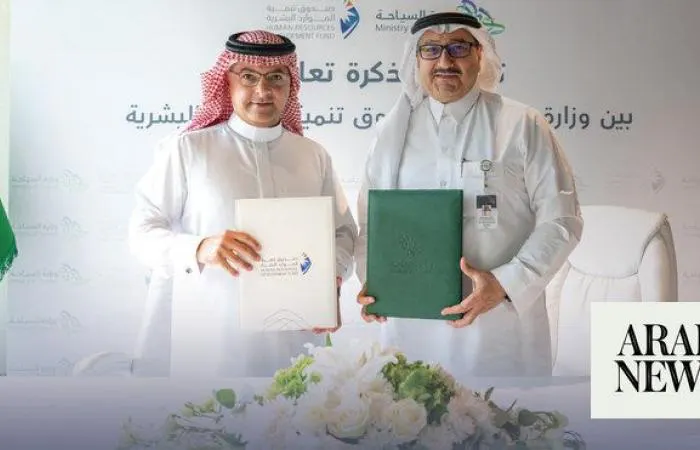In a move to strengthen the human capital in Saudi Arabia’s tourism sector, the Ministry of Tourism and the Human Resources Development Fund have signed a memorandum of understanding.
The agreement aims to strengthen the collaboration between the two entities in the areas of vocational training, qualification, and workforce empowerment within the tourism sector.
The MoU outlines several fields for cooperation, including the launch of initiatives designed to nurture local talent and promote sustainable professional development for young men and women across diverse sub-sectors of tourism.
Another objective of the MoU is to encourage the workforce to adapt to contemporary work practices in tourism professions. This will facilitate workshops in collaboration with relevant authorities to introduce programs that support the Saudization of the tourism industry and enhance the skill sets of its workforce.
The MoU was signed by Mohammad Bou Shanaq, the undersecretary for tourism human capacity development at the Ministry of Tourism, and Firas Al-Khail, deputy director general of business at HRDF.
The agreement will also facilitate the organization of regular job meetings aimed at expediting localization efforts, ensuring job stability, and clarifying the roles within the tourism sector.
These steps are anticipated to boost employment rates and elevate the quality and competitiveness of Saudi Arabia’s tourism industry.
The agreement underscores the commitment of Saudi authorities to enrich the tourism sector with trained and qualified personnel, in accordance with international best practices.
This comes as part of the Kingdom’s broader Vision 2030, which aims to support localization, promote job sustainability, and build an inclusive economic system involving Saudi nationals across various labor market activities.
The MoU is poised to play a pivotal role in achieving these goals, laying the foundation for a rejuvenated, localized, and sustainable tourism sector in the Kingdom.
In 2022, the HRDF supported the employment of about 400,000 beneficiaries in private sector enterprises.—AN










